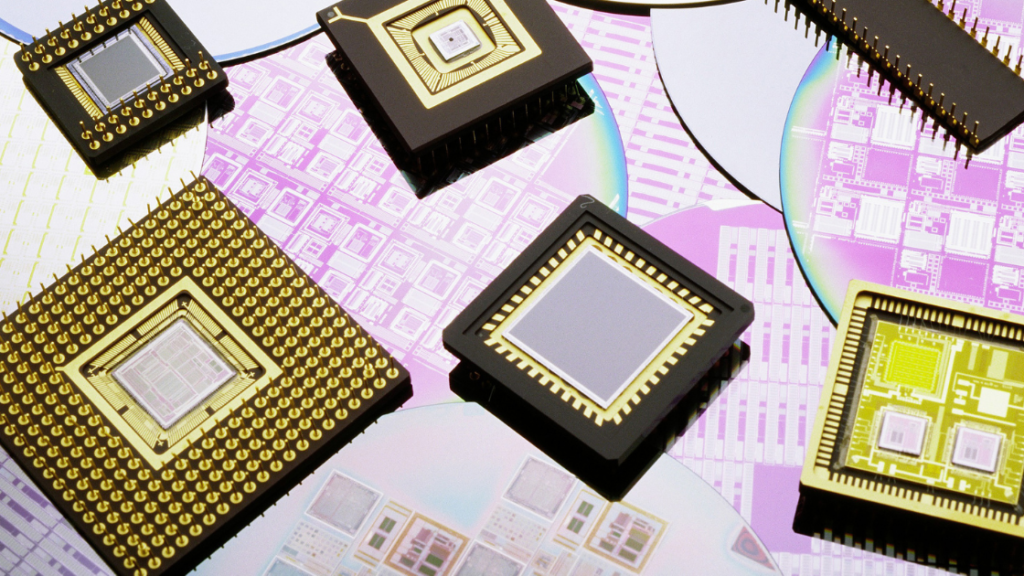CPA’s Take
:
China is planning to spend over $1 trillion on catching up to the US in technology, especially chipmaking. The US must make spending and investing in a US-based chip industry a high priority, starting now.
Beijing’s plans for sector in spotlight as Communist party develops next five-year plan
[Kathrin Hille in Taipei and Qianer Liu in Shenzhen | October, 24 2020 | Finacial Times]
When China’s Communist party delegates meet on Monday to thrash out their economic plan for the next five years, the semiconductor industry will be high on the agenda.
Beijing’s 30-year push to build a homegrown chip sector has taken on a new sense of urgency as Donald Trump’s administration tightens its chokehold on China’s leading technology groups.
Washington has barred companies worldwide from manufacturing chips for Huawei, the telecoms business, in what is a potential death sentence for its affiliate HiSilicon, China’s largest chip designer. The US has also restricted American companies from supplying Semiconductor Manufacturing International Corporation, China’s most advanced chipmaker, with the machines needed for making chips.
Experts and industry executives believe that even with China set to pour another $1.4tn into its technology sector by 2025, this targeted US effort to strangle the country both on supplies of semiconductors and the means to fabricate them makes Beijing’s push to develop the domestic chip sector much more difficult.
China’s efforts to develop its semiconductor sector in the past prioritised “basic building blocks” such as chip manufacturing, packaging and testing, said Randy Abrams, head of Asian technology research at Credit Suisse. “But now they need to try to become less reliant on the US where they can.”

Beijing’s priorities now include boosting its technological prowess in electronic design automation (EDA) — the software used in chip design — and in making the machines deployed in chip fabrication plants. US EDA tool makers Cadence and Synopsys have a stranglehold on the global market for advanced chips, while Applied Materials, Lam Research and KLA Tencor dominate critical segments of cutting-edge chip manufacturing equipment.
Analysts said that in semiconductor equipment and EDA, China is today where Huawei and ZTE were in the late 1990s, a low-cost provider still lagging behind overseas peers in technology. “The gap is not only about a certain dollar amount, you also need the time to develop the experience and talent,” said Mr Abrams.
The tools offered by Huada Empyrean, China’s most advanced EDA company, are significantly behind the capabilities required by SMIC, China’s biggest chipmaker, and chip industry leader Taiwan Semiconductor Manufacturing Corporation to make their most advanced products.
“Making a breakthrough in semiconductor equipment is the biggest hurdle,” said Zeng Guan-wei, an analyst at research firm Trendforce, who added that fewer than 10 per cent of these machines used in China are made by domestic companies.
Equipment makers were no more than an afterthought in Beijing’s past spending sprees for the sector — and those were massive. According to the Semiconductor Industry Association, Chinese chipmakers have been handed about $50bn in subsidies just from the central government over the past 20 years. That is 100 times the amount received by companies in Taiwan, which alongside South Korea is the world’s largest chip manufacturing hub.

An OECD study of 21 chipmakers worldwide identified four Chinese companies among the largest recipients of state funding. The OECD found that SMIC and Tsinghua Unigroup, one of China’s leading chip design houses which has now also invested in production, received state support totalling more than 30 per cent of their revenues between 2014 and 2018.
Despite that, China’s chip production has fallen far short of meeting the country’s needs. According to the China Semiconductor Industry Association, only 27 per cent of chips sold in the country were made domestically, with the remainder covered by imports.
Beijing has committed to invest heavily as part of its response to pressure from Washington, in addition to new tax incentives for chipmakers. The 14th Five-Year Plan is expected to bring more support.
But some warn that China needs to recalibrate the way it supports the industry.
“I think funding is not a problem now,” said an engineer at SMIC. “But how will these support funds be distributed? Will some of the relatively backward but key parts for the chip industry in China get more attention, such as EDA or manufacturing equipment?”
For example, he added, software experts could make much more money working at internet companies than at EDA ones.
The industry has also suffered because of inefficiency. Over the past three decades, hundreds of chip projects have failed because of investors lacking the required technical knowledge or after having redirected subsidies into unrelated property projects.
The promise of more government support for the industry could actually worsen the situation. In the first nine months of 2020, more than 13,000 Chinese enterprises registered as chip companies, even though many have no prior industry experience.
The National Development and Reform Commission, China’s chief state planning body, said this week the latest push should focus on preventing such waste.
“There seems to be a tendency in China that enterprising people seize upon the opportunity to cast themselves as patriotic investors when there is nationalist rhetoric,” said Douglas Fuller, a professor at Hong Kong City University and an expert on China’s industrial policy in the chip sector. “I am hearing again and again how bad things are in most other sectors, so the prospect of big funding in the chip sector works like a magnet.”
Read the original article here.













